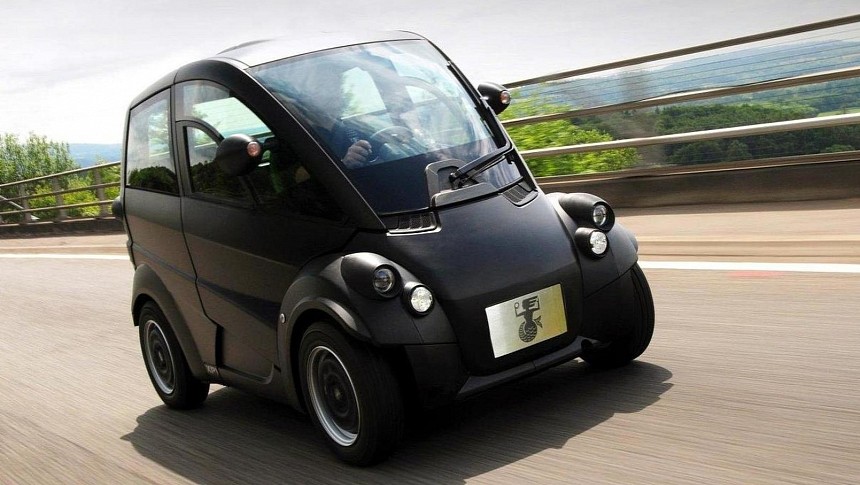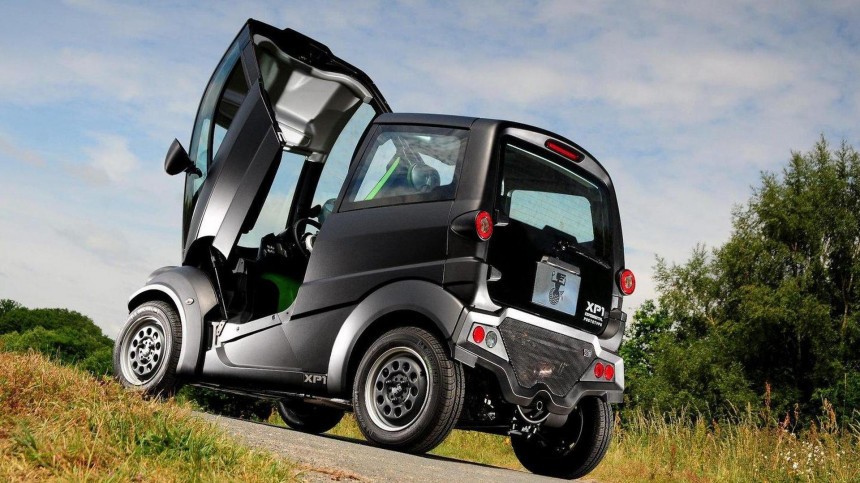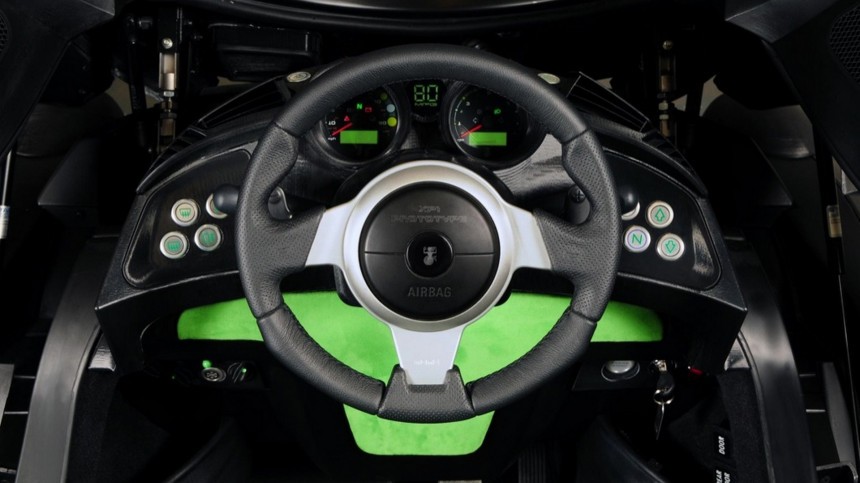Microcar buyers are getting more and more attractive propositions. The Microlino 2.0 and the city transformer are two good examples, but no microcar has ever proposed something as clever as what the GMA T.25 did back in 2010. It should have reached production lines in 2016, but I am still waiting for it.
At the time, I interviewed Gordon Murray. He used to say that he conceived the T.25 when he was stuck in traffic with several other drivers, some of them driving massive SUVs with no one else inside them. The famed designer realized that the situation was absurd and that a smaller and more rational vehicle would have helped everyone move faster, park more effortlessly, and spend a lot less money moving around.
The T.25 was just 2.40 meters (94.5 inches) long, 1.30 m (51.2 in) wide, 1.60 m (63 in) tall, and had a wheelbase of 1.78 m (70.1 in). The prototype had a 660 cubic-centimeter (40.3 cubic-inch) three-cylinder engine that delivered 38 kW (51 hp) and a five-speed semi-automatic gearbox, both derived from the powertrain of a smart fortwo, but it was a much lighter vehicle. While the second-generation smart weighed 750 kilograms (1,653 pounds), the T.25 tipped the scale at only 575 kg (1,268 lb). Being lighter is far from what fascinated me about that project.
First, there was the seating position: central, like what the McLaren F1 that Murray also designed offered. It must provide excellent visibility to any side of the road, apart from being adapted to any rule of the road applied in each country. Whether it presents left-hand or right-hand traffic, the T.25 would be at home.
Despite being so light, Gordon Murray's city car promised B-segment safety levels, which is equivalent to saying it protected its passengers as much as a Volkswagen Polo or a Renault Clio. The single front door – which would more appropriately be called a canopy – tilts forward to give access to the T.25 interior, which is the real gem of this city car.
Instead of carrying only two people – like the smart fortwo and the Microlino – the T.25 could transport the driver and two passengers. Parents with two kids would find that amazingly handy. Sometimes, you have to pick only one at school due to different classes and exit times. In some others, you just have to take both of them with you, and a car that seats only one passenger will not solve the problem. For weekend journeys and road trips, a four or five-seater would still be necessary, but microcars are for people who already have them or just do not want one. In that case, seating at least three people is terrific.
The only city car that had that capability was one that I owned a long time ago. It was called the Gurgel XEF. That little guy was built with a glass-fiber reinforced plastic body that seemed to sit on top of a shortened Volkswagen Beetle floor pan. In fact, it had its own chassis, developed by Gurgel. I bought mine with the intention of fixing it and gave that up because I had no money to complete the task and no intention to drive it much longer after I became a passenger during a day of heavy rain. Ironically, it was the only car that ever made me earn money after using it. The XEF was extremely rare. The numbers are a bit controversial, which makes the more cautious among us state that less than 200 units were produced. Some others prefer to say only 145 units were ever sold. It must be even rarer nowadays. Although its sales were low, at least it made it into production, something I do not forgive the T.25 for skipping.
In August 2013, Autocar wrote that Gordon Murray had sold the project to a customer and that it would be produced in 2016. Almost seven years later, we still have nothing on the T.25 or any other city car with a similar proposition. Honestly, I'd pass on the single door that wants to be a canopy, especially on rainy days. However, I would still love to see and eventually buy a city car that was as light, safe, and practical as the T.25. I was also very fond of the T.27, but I am not so sure about it anymore. Maybe with more energy-dense batteries that are also safer than ternary cells, but I'd rather wait until we get there.
You, Gordon Murray's client for the T.25, please remember that you have got an engineering marvel in your hands. Although that was not my case with the Gurgel XEF, perhaps you should do what I did with my car: sell the project to someone willing to manufacture and sell it in high volumes. The environment will thank that even if it uses a combustion engine.
The T.25 was just 2.40 meters (94.5 inches) long, 1.30 m (51.2 in) wide, 1.60 m (63 in) tall, and had a wheelbase of 1.78 m (70.1 in). The prototype had a 660 cubic-centimeter (40.3 cubic-inch) three-cylinder engine that delivered 38 kW (51 hp) and a five-speed semi-automatic gearbox, both derived from the powertrain of a smart fortwo, but it was a much lighter vehicle. While the second-generation smart weighed 750 kilograms (1,653 pounds), the T.25 tipped the scale at only 575 kg (1,268 lb). Being lighter is far from what fascinated me about that project.
Despite being so light, Gordon Murray's city car promised B-segment safety levels, which is equivalent to saying it protected its passengers as much as a Volkswagen Polo or a Renault Clio. The single front door – which would more appropriately be called a canopy – tilts forward to give access to the T.25 interior, which is the real gem of this city car.
The only city car that had that capability was one that I owned a long time ago. It was called the Gurgel XEF. That little guy was built with a glass-fiber reinforced plastic body that seemed to sit on top of a shortened Volkswagen Beetle floor pan. In fact, it had its own chassis, developed by Gurgel. I bought mine with the intention of fixing it and gave that up because I had no money to complete the task and no intention to drive it much longer after I became a passenger during a day of heavy rain. Ironically, it was the only car that ever made me earn money after using it. The XEF was extremely rare. The numbers are a bit controversial, which makes the more cautious among us state that less than 200 units were produced. Some others prefer to say only 145 units were ever sold. It must be even rarer nowadays. Although its sales were low, at least it made it into production, something I do not forgive the T.25 for skipping.
You, Gordon Murray's client for the T.25, please remember that you have got an engineering marvel in your hands. Although that was not my case with the Gurgel XEF, perhaps you should do what I did with my car: sell the project to someone willing to manufacture and sell it in high volumes. The environment will thank that even if it uses a combustion engine.
















